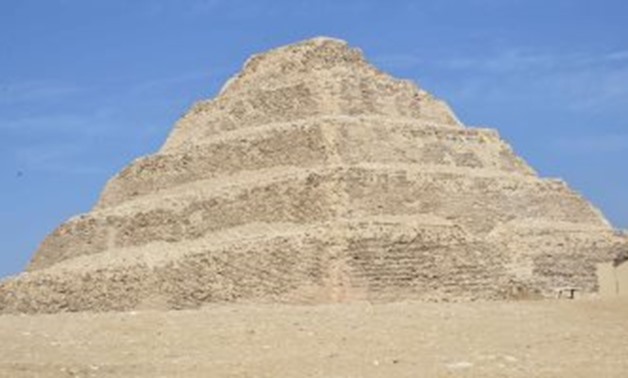
Step Pyramid of Djoser was re-opened in 2020 after years of neglect - ET
CAIRO – 30 June 2020: Today, the Egyptian people celebrate the seventh anniversary of the glorious June 30 revolution, after the Egyptians succeeded in removing the Muslim Brotherhood from power and from the whole political scene.
Removing the morbid terrorist group from the political scene allowed the country to continue its path towards success and progress that almost completely stopped following the events of 2011.
After the June 30 revolution, planning began for Egypt to be in the first ranks globally. Development and restoration of all the archaeological sites and museums were launched, besides the opening of a large number of archaeological sites that have been closed for decades. This became possible when the state allocated huge sums of money due to its leadership’s keenness on preserving the ancient Egyptian heritage and civilization.
In an earlier interview with Minister of Tourism & Antiquities Khaled el-Anani on the June 30 revolution, he said that the antiquities file are presented to the president directly, and that he closely follows up on the archaeological projects.
“When I talk to him [President Sisi] about the various files of the Ministry of Tourism & Antiquities, I discover that he [The President] is more aware of the cases and its details than myself,” said Anani, reflecting the great interest the state’s leadership in the Egyptian heritage.
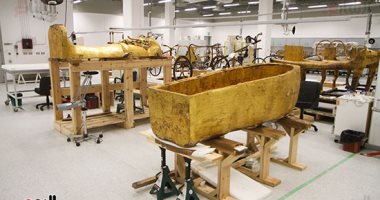 Grand Egyptian Museum
Grand Egyptian Museum
The Grand Egyptian Museum is the largest museum in the world. It houses a huge number of artifacts totaling up to 50,000 pieces. The museum will exhibit the personal belongings of the Golden King Tutankhamun for the first time ever.
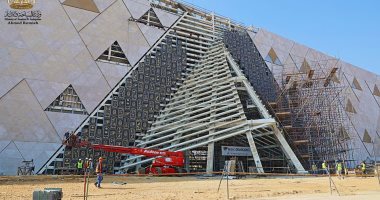
The cornerstone of the project was laid in February 2002. Its construction started in May 2005, but was moving with a very slow pace, until the political turmoil that occurred in 2011 brought the construction work to a stand-still.
With the Muslim Brotherhood assuming power in Egypt, the project was not re-executed. After the June 30 revolution, President Abdel Fatah el-Sisi instructed to complete the project in a timely manner.
Indeed, all construction work has been completed, a large number of artifacts have arrived at the museum and have been restored using the highest scientific methods.
In previous press statements, Khaled el-Anani stated that the president's directions are clear to the government; funding the Grand Egyptian Museum project will not stop. Not only because it is an important museum, but also because it creates many job opportunities, develops the area and attracts tourism.
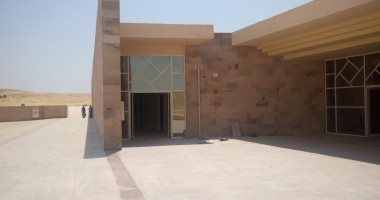 Giza Plateau
Giza Plateau
This project started in January 2009. The works were expected to be executed during a 3-year time program ending in 2012 but somehow the implementation stalled.
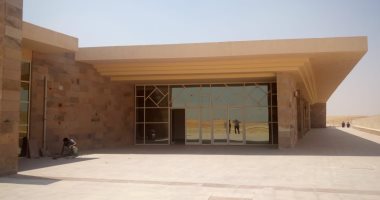
Fortunately, June 30 revolution came to place the project within the strategy of preserving the archaeological heritage and natural heritage of the plateau and raising the quality of the visitor's experience.
The project was placed among the prioritized national projects due to its importance for tourism and economy, and because it represents the unique value of Egyptian heritage and history, which is appreciated by the whole world.
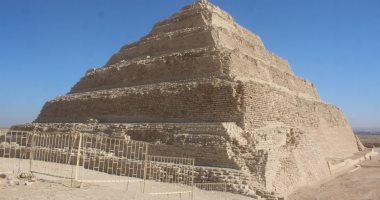 Djoser Pyramid Restoration Project
Djoser Pyramid Restoration Project
Like the Giza Plateau project, it started in January 2009 and was set to be executed during a 3-year time program ending in 2012 but somehow the implementation stalled.
The June 30 revolution comes and the project resumes. The Djoser Pyramid was opened in 2020.
The Step Pyramid of Djoser is the first pyramid and the first stone building in the world. The pyramid is located in the Saqqara Archaeological Area. It is one of the most important monuments of Saqqara necropolis, west of the ancient city of Memphis in Egypt.
The Djoser Pyramid was built by Amenhotep in the 27th century BC as Djoser's burial place.





Comments
Leave a Comment